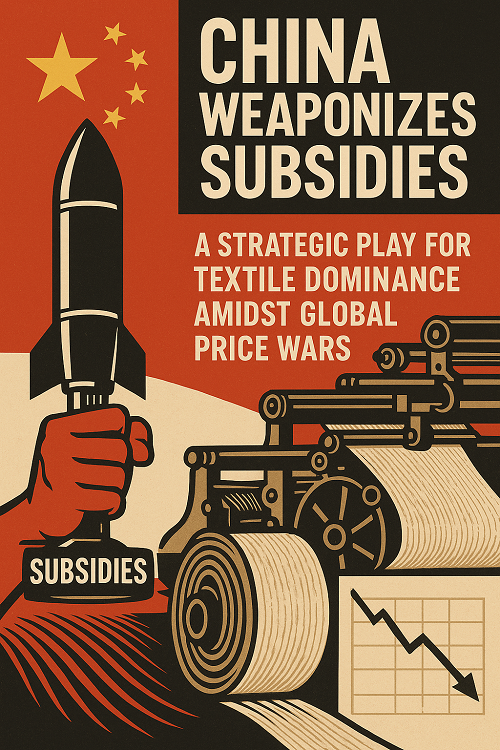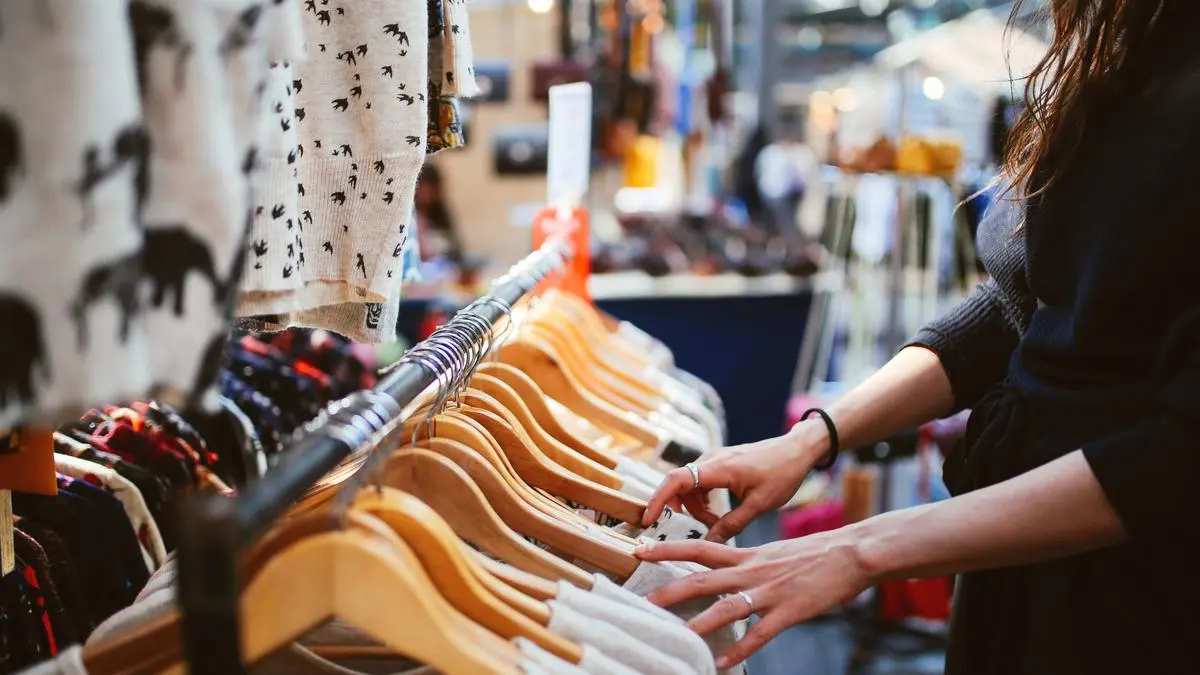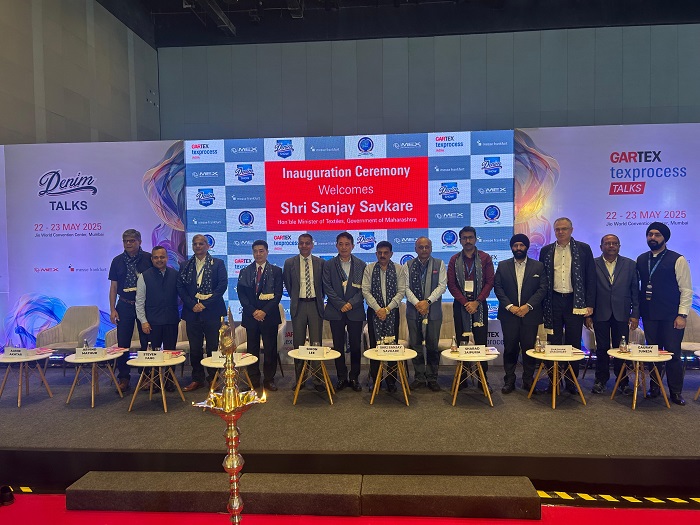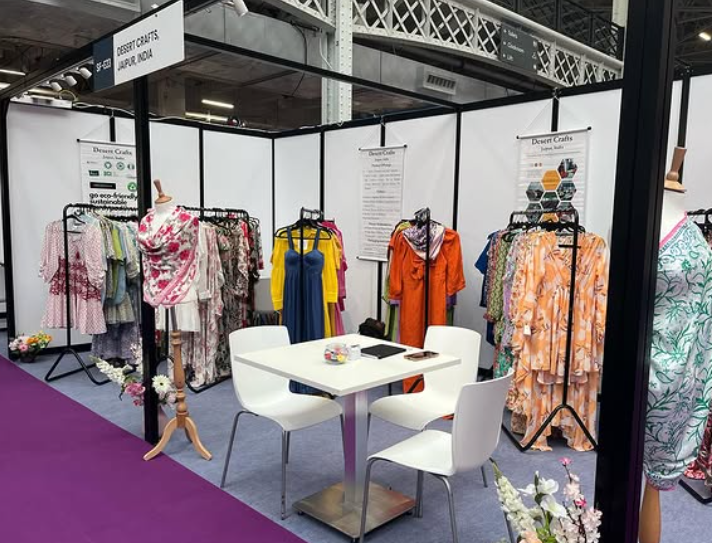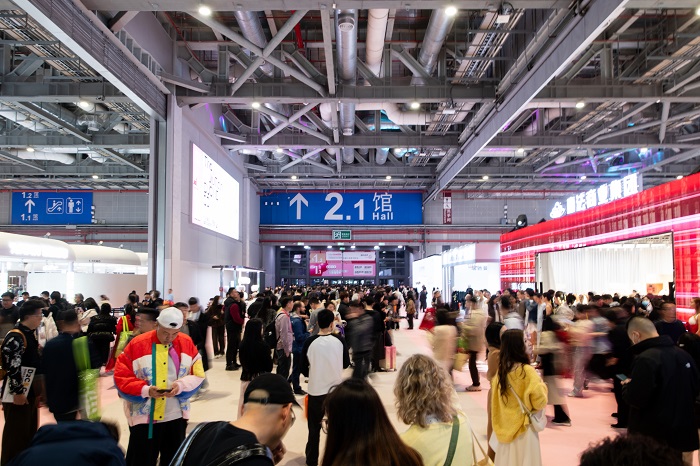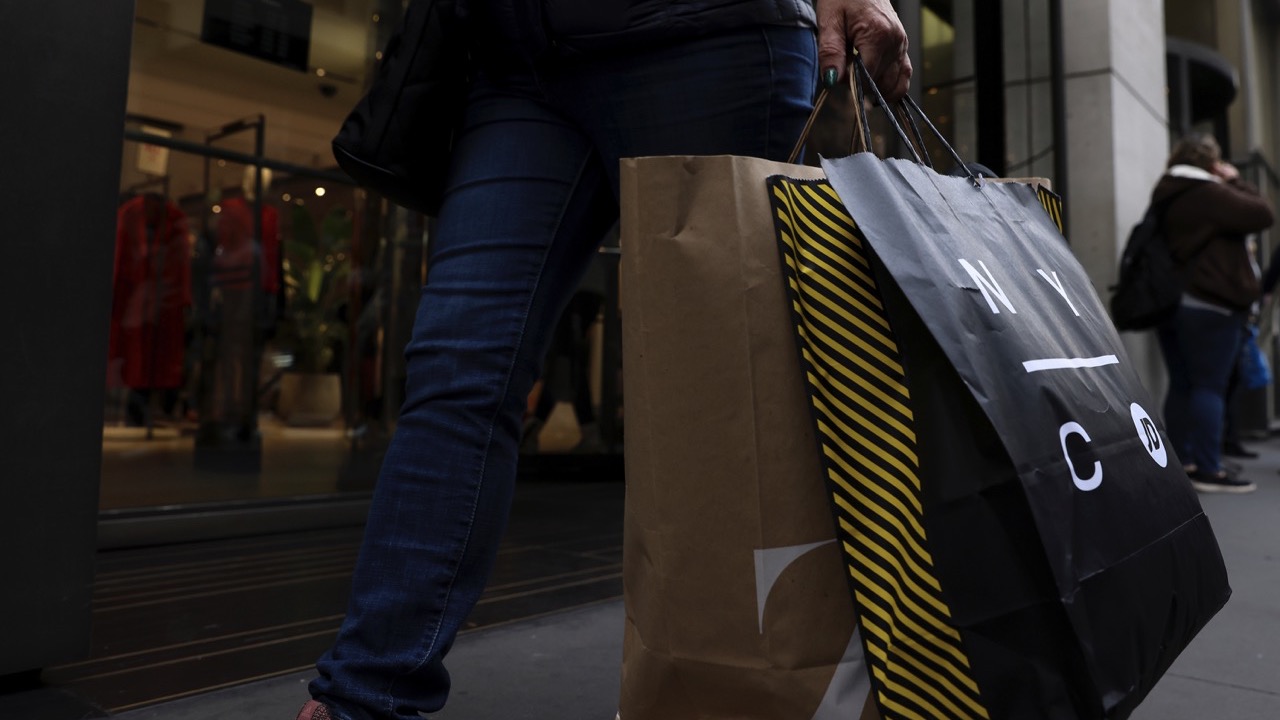In his speech to inaugurate Bharat Tex 2024, Prime Minister Narendra Modi underscored the government's dual focus on skill and scale in the Indian textile industry. He highlighted the expansion of the National Institute of Fashion Technology (NIFT) institutes to 19 across the country, indicating a commitment to enhancing skills within the sector.
Moreover, PM Modi emphasised the importance of connecting local weavers and artisans with NIFTs through specialised training programs aimed at integrating new technologies into their craft. He said, the Samarth Scheme has provided capacity building and skill development training to over 2.5 lakh individuals, with a significant number of women participating and finding placements in the industry.
PM Modi also emphasised on the importance of balancing technology and mechanisation with the uniqueness and authenticity inherent in Indian textiles. He noted, India has the required capacity to meet both demand with the country's tradition of producing artisanal products with distinctive features aligning with evolving fashion trends.
India's increasing prominence as a producer of cotton, jute, and silk combined with the government support for cotton farmers and the introduction of initiatives like Kasturi Cotton, will bolster India's brand value globally, the PM Modi noted. He also addressed measures for the jute and silk sectors, as well as the emerging opportunities in technical textiles, including the National Technical Textiles Mission and the potential for startups in this domain.
Additionally, PM Modi underscored the significant employment potential of the textile industry, particularly for rural populations and women. He noted that a significant portion of apparel makers and handloom weavers are women, highlighting the sector's role in empowering women and driving rural development.
Finally, PM Modi acknowledged the strides made in promoting Khadi as a catalyst for development and employment over the past decade, attributing its success to welfare schemes and infrastructure investments that have also benefited the broader textile sector.
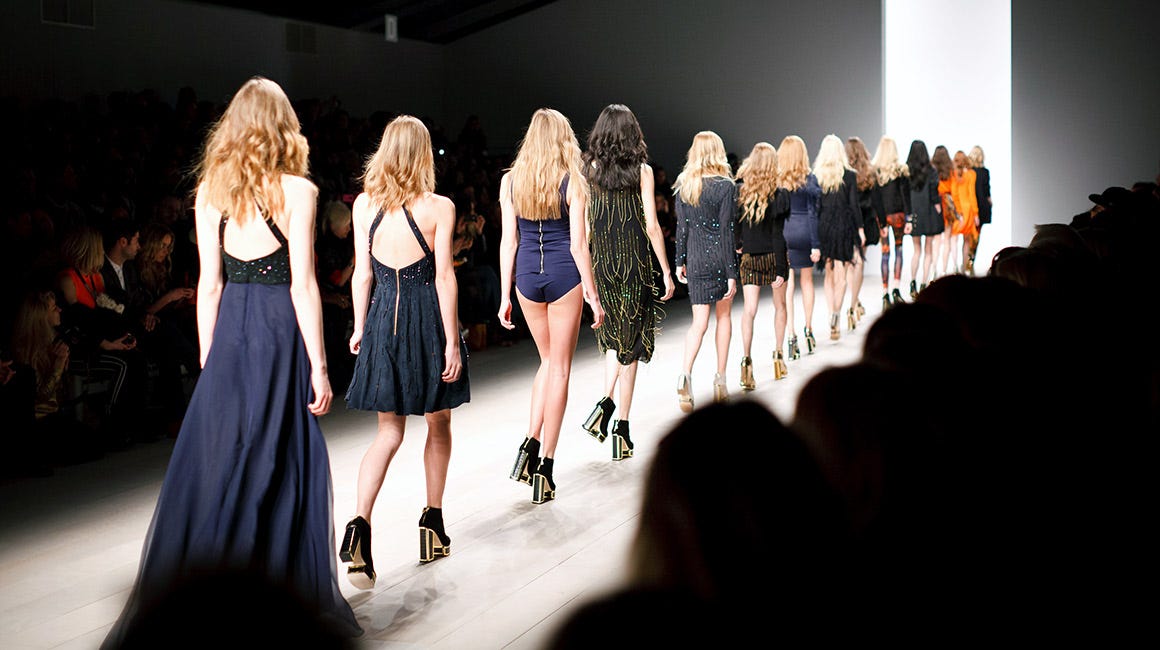
Europe, the world's leading apparel importer, is experiencing a dynamic shift in its consumption patterns and sourcing strategies. This transformation is driven by numerous factors, including changing consumer preferences, sustainability concerns, and evolving supply chains.
A conscious shift in consumption
The European apparel market grew 6.75 per cent annually between 2017 and 2022, reaching €191.4 billion in 2022 as per CBI. However, the volume of imports stagnated, indicating a shift towards quality over quantity.
Consumers are increasingly prioritizing sustainability, ethical production, and longevity in their clothing choices. As per McKinsey 63 per cent European consumers say they consider sustainability when buying clothes. This is reflected in the rise of second-hand clothing, rental services, and brands focusing on eco-friendly materials and fair labor practices. This trend is also evident in the growing demand for organic cotton, recycled materials, and transparent supply chains. For example, Patagonia, a US-based outdoor apparel brand, witnessed a 130 per cent increase in sales in Europe between 2016 and 2020, attributed to its commitment to environmental activism and product durability.
In fact, consumers prioritize experiences and seek versatile, multi-functional garments over excessive purchases. The concept of ‘fast fashion’ is waning, replaced by a focus on quality, versatility, and timeless pieces. Consumers are investing in fewer items that they can wear for longer periods, contributing to a rise in the ‘slow fashion’ movement.
Buying behavior transformation
Online shopping platforms and personalized recommendations are shaping consumer behavior. As per Eurostat, online shopping continued to grow, reaching 34 per cent of total apparel sales in 2022.
Shoppers are seeking unique and curated experiences, driving the growth of niche brands and custom-made clothing. Also, DTC brands that offer personalized experiences, catering to specific needs, and bypassing traditional retail mark-ups have seen traction. This shift is impacting both established players and emerging brands. Also, clothing subscription boxes are gaining ground, offering curated styles and convenience. This model caters to consumers seeking variety and hassle-free shopping experiences. The popularity of pre-owned clothing is rising, driven by affordability, sustainability concerns, and the desire for unique pieces. This trend is creating new business models and impacting traditional retail channels. As Michelle McDermott, a fashion industry analyst at Euromonitor International says, "Consumers are no longer just buying clothes, they are buying into a brand's values and story."
Category-specific trends
Men's Wear: Focus on comfort, athleisure, and casual styles. Growing demand for ethical and sustainable brands.
Women's Wear: Personalization, inclusivity, and a mix of comfort and statement pieces. Sustainable materials and vintage styles gaining ground.
Kidswear: Emphasis on functionality, durability, and eco-friendly materials. Growing popularity of gender-neutral clothing.
Knitwear: Sustainable materials like organic cotton and recycled wool are preferred. Demand for versatile and timeless pieces is increasing.
Denimwear: Shift towards more sustainable production methods and vintage-inspired styles. Consumers are seeking higher-quality denim that lasts longer.
Outerwear: Functionality and weather protection remain key, but sustainability and ethical sourcing are becoming increasingly important. There is growing demand for functional, weather-resistant pieces with sustainable features.
Segmentation trends
Premium consumers seek quality, craftsmanship, and ethical production, but may prioritize value during economic downturns. For value consumer price sensitivity increases, but demand for ethical practices persists, leading to a rise in "affordable sustainability." Second-hand and rental segment sees exponential growth, appealing to budget-conscious consumers and sustainability advocates. Overall, while the premium segment remains resilient, value-conscious consumers are driving demand for affordable, ethically made clothing. This is creating opportunities for brands that offer sustainable and quality products at accessible price points.
What the future holds
The European apparel market is expected to continue its transformation, with sustainability, digitalization, and personalization playing key roles. Consumers will be increasingly conscious of the impact of their choices, favoring brands that offer ethical and environmentally friendly products. Direct-to-consumer models, subscription services, and second-hand platforms are likely to gain further traction. Segmentation will become more nuanced, catering to diverse consumer preferences and values. By adapting to these shifts and embracing innovation, brands can thrive in this evolving landscape.
The Karl Mayer Group, a pioneering force in the composites industry, is set to showcase its commitment to sustainability and cost-efficiency at JEC World 2024, taking place from March 5-7. Renowned for its presence at this premier trade fair, the company will exhibit alongside Karl Mayer Technical Textiles and its Stoll Business Unit in Hall 5, Stand K32 at the Parc des Expositions in Paris Nord Villepinte.
A key highlight of the exhibition will be the spotlight on non-crimp fabrics and tapes crafted from bio-based yarn materials, catering to the increasing demand for sustainable solutions within the composites sector. Addressing the pressing concerns of the climate crisis and escalating energy costs, Karl Mayer Technical Textiles is poised to unveil innovative applications, including an alpine ski incorporating hemp fiber fabrics.
This innovative product, a result of subsidized initiatives, utilizes hemp tapes from Fuse GmbH, processed into non-crimp fabrics using Karl Mayer's cutting-edge Cop Max 5 multiaxial warp knitting machine. Leveraging its application technology center and composite expertise, the company stands ready to assist customers in project implementation and processing trials.
Moreover, the trade fair serves as a platform to reinforce Karl Mayer's standing as a premier development partner and specialized machinery manufacturer in the composites realm. With a focus on innovation, the company will unveil advancements in multiaxial machine technology for glass roving composite production, alongside Stoll Business Unit's emphasis on thermoplastic materials.
The exhibition will feature knit-to-shape components boasting visually striking textile exteriors and reinforced inner surfaces, eliminating the need for additional molding. This innovative approach not only reduces waste but also optimizes material utilization.
Eagerly anticipating engaging discussions and fostering new collaborations, the Karl Mayer Group invites attendees to explore their booth, promising a showcase of ingenuity and forward-thinking solutions.
In a significant move to mark the Lunar New Year, three prominent Chinese fashion conglomerates, representing a total of eight brands, have joined forces with Canopy, a leading environmental nonprofit. Their collaboration aims to safeguard critical forests by excluding them from their viscose and paper packaging supply chains. Additionally, these companies are prioritizing the adoption of circular and environmentally-friendly alternatives, signaling a paradigm shift in the industry.
Ellassay Group, a multi-brand fashion entity, sports apparel brand Engine Bird, and sock company Happywool are among the brands committing to protect Ancient and Endangered Forests. Their decision aligns them with over 500 global fashion brands, including industry giants like Stella McCartney and Uniqlo, in supporting Canopy's initiatives.
The fashion industry's reliance on Man-Made Cellulosic Fibre (MMCF)-based materials and paper packaging has led to the logging of over 3.4 billion trees annually, endangering crucial ecosystems worldwide. As China dominates clothing manufacturing and consumption, the pledge by these Chinese brands sets a compelling precedent against forest degradation.
Nicole Rycroft, Founder and Executive Director of Canopy, expressed delight in welcoming these Chinese companies, emphasizing the symbolism of the Lunar Year of the Wood Dragon, synonymous with vitality and creativity. Their proactive stance reflects a commitment to preserving forests, biodiversity, and combating climate change.
Alan Xia, Founder & Chairman of Ellassay Group, highlighted their dedication to sustainability and protecting biodiversity. He emphasized their ambition to lead China's fashion industry towards a more sustainable future.
The signatories not only vow to source textiles and packaging responsibly but also collaborate with Canopy to promote NextGen materials derived from recycled clothing and agricultural residues. These materials offer a sustainable alternative while preserving forests, reducing water usage, and fostering green employment opportunities.
China's support for NextGen viscose and packaging production underscores its potential to spearhead global sustainability efforts. Government initiatives and market incentives are already driving the adoption of circular practices within the fashion supply chain.
With the addition of these Chinese companies, Canopy's initiatives now encompass 555 brand partners with a collective annual revenue of 1.05 trillion USD under CanopyStyle, and 427 brands generating over 236 billion USD annually under Pack4Good. This collaboration marks a crucial step towards a more sustainable and forest-friendly fashion industry.
India is pushing for labor-intensive textiles and apparel products to be classified as non-tariff items in the ongoing negotiations for a free-trade agreement (FTA) with the European Union (EU).
This move comes as EU nations currently impose higher import duties, typically ranging from 10-12 per cent, on textile products, putting India at a disadvantage compared to China, the EU's leading supplier of apparel and textiles.
The seventh round of negotiations, which commenced on February 19, holds significant importance for the Indian textiles and apparel sector. This is especially true given that the EU, the US, and West Asian countries are major export destinations for Indian garments.
During the ongoing discussions, the issue of including textiles under the non-tariff barrier category has been prominently raised, signaling optimism among Indian negotiators. India's textile exports to the EU witnessed a decline from $44.43 billion in 2021-22 to $36.68 billion in FY23. In the first 10 months of the current fiscal year, India exported textiles worth $27.69 billion globally, including products valued at $7.67 billion to the EU.
India's emergence as a preferred destination for sourcing textiles, attributed to better quality products adhering to global standards, is seen as a driver for export growth. Stakeholders believe that the elimination of import duties would further stimulate this growth.
However, opinions among experts differ regarding the proposal for zero duty on textile exports. Ajay Srivastava, Founder, Global Trade Research Initiative (GTRI), highlights, merely signing an FTA may not lead to a substantial increase in India’s export of labor-intensive goods. Strengthening the product profile is deemed essential for realising significant gains, as illustrated by India's apparel exports to Japan post the India-Japan FTA, which did not witness the expected surge despite the elimination of duties.
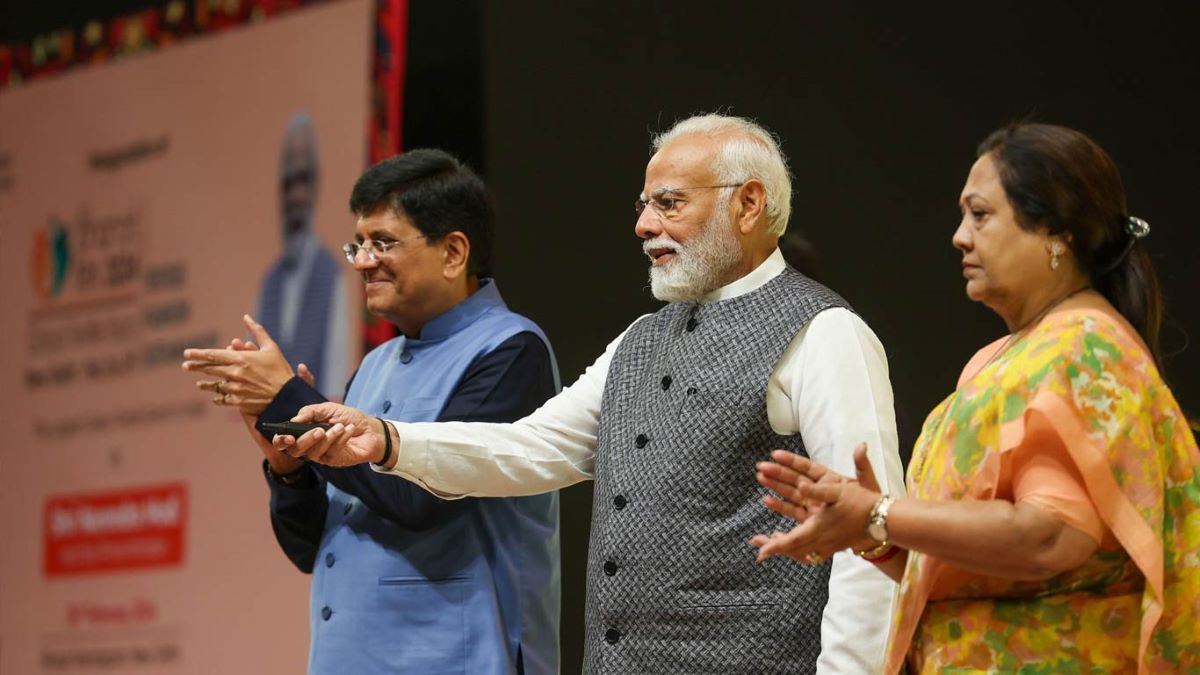
Prime Minister Narendra Modi inaugurated the four-day Bharat Tex Expo 2024 at Bharat Mandapam, heralding it as the world's largest textiles event. In his address, PM Modi underscored the government's dedication to integrating all facets of the textile value chain, encapsulated by the strategy of the five F’s: Farm, fibre, factory, fashion, and foreign.
Government's five F’s strategy
PM Modi elucidated on the significance of the five F’s strategy, emphasizing its pivotal role in fostering holistic growth within the textile sector. By aligning efforts towards farm support, fibre development, factory enhancement, fashion promotion, and foreign market expansion, the government aims to bolster the entire spectrum of textile activities. Notably, the recent amendments in the MSME definition regarding investment and turnover seek to empower smaller enterprises, ensuring their access to government initiatives and fostering industry scalability.
Reaffirming the government's unwavering support, PM Modi assured the textiles sector of comprehensive assistance. He reiterated the administration's commitment to augmenting the textile industry's contribution towards India's progress.
Focus on MSME sector
Addressing the Micro, Small & Medium Enterprises (MSME) sector, PM Modi highlighted the series of measures implemented to fortify its foundations. Amendments in the MSME definition aim to bridge the gap between artisans and the market, empowering businesses of all sizes to thrive.
The event witnessed substantial participation, with over 3,000 exhibitors, 3,000 buyers from 100 nations, and approximately 40,000 trade visitors in attendance. This robust engagement underscores the global significance of Bharat Tex Expo 2024 as a premier platform for textile trade and collaboration.
Emphasis on Kasturi Cotton
PM Modi emphasized the role of Kasturi Cotton in shaping India's identity on the global stage. Recognizing India's position as a leading producer of cotton, jute, and silk, he lauded the government's support to farmers and underscored the significance of initiatives like Kasturi Cotton in fostering national pride and sustainability.
Highlighting the textile sector's remarkable growth trajectory, PM Modi noted a 25 per cent increase in the production of yarn, fabric, and apparel over the last decade. This exponential growth reflects the positive impact of stable governance and visionary policies on India's textile landscape, propelling the industry's valuation to over Rs 12 lakh crores.
Bharat Tex 2024: A confluence of trade and investment
Organized by a consortium of 11 Textile Export Promotion Councils and bolstered by government support, Bharat Tex 2024 is positioned as a catalyst for trade and investment in the textile sector. With a strategic focus on sustainability, the event features an extensive lineup of knowledge sessions and global panel discussions aimed at addressing key industry challenges and fostering collaborative solutions.
Bharat Tex 2024 is poised to galvanize investment, trade, and exports in the textile sector, with over 50 announcements and MoUs expected to be signed during the event. By fostering dialogue, innovation, and partnerships, the expo aims to propel the textile sector towards a sustainable and prosperous future.
A showcase of India's textile diversity
Bharat Tex Expo 2024 has designated Uttar Pradesh and Maharashtra as 'Partner States,' recognizing their significant contributions to the Indian textile industry. This acknowledgment aims to underscore the pivotal role these states play in shaping the country's textile landscape. Additionally, the event is set to feature the vibrant textile offerings from Gujarat, Telangana, and Madhya Pradesh, now identified as "Supporting Partner States," further enriching the diversity on display.
The world's largest textiles event, Bharat Tex 2024, serves as a premier platform to exhibit the diverse textile ecosystems thriving across different regions of India. The inclusion of state pavilions from Andhra Pradesh, Tamil Nadu, Karnataka, and Assam adds depth to the showcase, allowing attendees to explore the rich tapestry of India's textile heritage.
Following unsuccessful attempts to secure additional funds amidst sluggish sales over consecutive quarters, pioneering Swedish textile recycler Renewcell announced plans to declare bankruptcy.
Despite expectations to report its full fiscal year earnings, Renewcell later postponed the release amid challenging negotiations with its major shareholders, including H&M and Girindus, along with existing lenders such as BNP Paribas and Nordea. The company failed to attract new investors or devise a viable solution to ensure its ongoing operations.
Renewcell specialises in producing Circulose, a revolutionary textile pulp derived from chemically recycled cotton waste, and operates one of the world's pioneering commercial-scale textile-to-textile recycling facilities.
Renewcell struggled to secure sufficient orders, despite Inditex's commitment to purchase 2,000 tons of material blend made with Circulose through Tangshan Sanyou.
Former CEO Patrik Lundström's departure and the subsequent appointment of Magnus Håkansson as interim CEO marked a transition period aimed at revitalising sales. However, slow sales persisted, prompting renewed appeals to brands to support Circulose adoption.
Renewcell's predicament underscores broader challenges within the fashion industry, where circularity initiatives are hailed as solutions to waste problems, yet implementation remains a hurdle.
H&M's minority stake in Renewcell since 2017 and its endorsement of Circulose material showcased initial optimism. However, despite the full-scale factory's launch in 2022 and ambitious production targets for the future, Renewcell struggled to meet demand and achieve financial viability.
Its bankruptcy announcement reflects the sobering challenges of aligning sustainability aspirations with commercial viability in the fast-paced fashion industry, signaling a setback in the journey towards a circular economy for fashion.

The US economy defied recessionary whispers, growing robustly in Q3 and Q4 2023. This presents both opportunities and challenges for the apparel industry, navigating a "swirl" of economic influences. While interest rates remain a headwind, tailwinds like a strong labor market and rising consumer confidence fuel optimism for the apparel industry. However, key questions linger.
Impact on apparel segments
Rising interest rates could dampen high-end spending, but brand loyalty and exclusivity may offer resilience. With higher disposable incomes and resilient demand, luxury brands are likely to thrive. High interest rates might also nudge some consumers towards pre-owned or vintage luxury, but overall, the segment remains strong.
Price-sensitive consumers might shift towards value options, potentially benefiting fast fashion retailers. Its value proposition and adaptability to trends could attract budget-conscious consumers. Meanwhile, continued focus on health and wellness could drive sustained growth in active wear segment. Consumers increasingly value eco-friendly practices, presenting an opportunity for brands with transparent and sustainable supply chains.
Supply chain considerations
Geopolitical tensions, ongoing labor shortages in key manufacturing regions, and volatile raw material costs could continue to disrupt the apparel supply chain, leading to price fluctuations and delivery delays. Some companies may explore nearshoring or reshoring production to mitigate these risks, although cost considerations and infrastructure limitations remain hurdles. Investments in supply chain transparency and agility can mitigate risks and build resilience. The tight labor market affects apparel manufacturing and logistics. Automating processes, investing in reskilling programs, and offering competitive wages can help address these challenges.
While the Consumer Price Index (CPI) for apparel increased in 2023, retail prices haven't always reflected this. Retailers meanwhile are employing aggressive promotions and discounts to clear inventory and remain competitive. They are offering deeper discounts and promotions to attract price-sensitive consumers, potentially eroding profit margins. In fact, to avoid stockpiles, they may sell existing inventory at lower prices, even as input costs rise. Meanwhile, intense competition in the apparel industry keeps prices down. And to do this, some brands might be substituting cheaper materials to absorb cost increases without raising retail prices significantly.
The way forward
One way to move ahead in a complex economic situation is to diversify product offerings by catering to different price points and a wider range of consumer needs. Offer products that deliver value beyond price, like quality, durability, and unique design. It’s also important to adopt technology and utilize data analytics to optimize inventory management and pricing strategies. Leverage data analytics to understand customer preferences and optimize pricing, marketing. With consumers increasingly drawn to sustainable practices, offering an opportunity for differentiation is also important for brands. Building closer ties with suppliers to mitigate disruption risks and secure reliable sourcing is key. Another important aspect is to adopt omnichannel retail as seamless online and offline experiences are crucial for today's consumers.
Rebounding notably, the comprehensive prosperity index for the China’s textile industry grew by 55.6 per cent, 57 per cent, 55.9 per cent, and 57.2 per cent respectively in 2023, shows data from the China National Textile and Apparel Council.
Capacity utilisation rates and production in the textile sector increased steadily during the year, as per the National Bureau of Statistics. In 2023, the textile and chemical fiber industries boasted capacity utilization rates of 76.4 per cent and 84.3 per ent respectively, surpassing national industrial averages. Particularly, the chemical fiber industry saw a 2-percentage-point increase in utilisation compared to the prior year. Though the industrial added value of large-scale textile enterprises decreased by 1.2 per cent Y-o-Y, it reflected a 0.7 percentage point improvement from 2022.
Diverse and personalised clothing consumption, coupled with the rising popularity of independent brands and the ‘guochao’ phenomenon, fueled domestic demand for textiles. Retail sales of clothing and related goods surged by 12.9 per cent in 2023, marking a 19.4 percentage point increase from 2022, surpassing pre-pandemic levels. Online retail, especially in sporting goods, grew by 10.8 per cent Y-o-Y.
Despite challenges such as reduced overseas demand and increased trade risks, China's textile exports demonstrated resilience. Exports to ‘Belt and Road’ countries showed promise, mitigating overall declines. Total textile and apparel exports reached $293.64 billion in 2023, marking an 8.1 per cent Y-o-Y decrease
While textile enterprises contended with market sluggishness and high costs, improved domestic demand bolstered benefits. Business revenue decreased by 0.8 per cent narrowing by 0.1 percentage points from the previous year, while total profits surged by 7.2 per cent a 32 percentage point increase from 2022. Operating income margins reached 3.8 per cent, a 0.3 percentage point rise from 2022.
Looking to 2024, China's textile industry faces continued uncertainties amid a complex international landscape. Yet, domestic market dynamics driven by urbanisation and ‘guochao,’ along with initiatives like the ‘Belt and Road’ and free trade zones, offer avenues for expansion and resilience against external risks.
Growing at a CAGR of 5.7 per cent, the global technical textile market is poised to reach $331.8 billion by 2032.
As per a report by Textile Today, growth in this market is likely to be driven by the advancements in science and technology, particularly in material science and technology, driving continuous innovation in the sector. Innovations in fiber and fabric technology have led to the creation of high-performance materials boasting attributes such as strength, durability, chemical resistance, and flame retardancy.
In 2024, synthetic polymers/fibers accounted for more than half of the worldwide technical textile market revenue. Synthetic fibers are widely used in automotive, apparel, building, filtration, and home furnishings industries. Woven textiles, categorised by weave, thread density, yarn count, and crimps, dominated the market, contributing to over five-eighths of the revenue.
Rapid urbanisation, population growth, increased construction and remodeling activities, and expansion in the automotive industry are driving market growth. The rise in sales of hybrid and electric vehicles further boosts product demand worldwide.
The healthcare sector contributes significantly to growth of the global technical textiles market with the rise in disposable medical clothing demand and the construction of healthcare facilities globally. Asia-Pacific is expected to rise as the fastest-growing region for technical textiles with growth driven by technological advancements in textile manufacturing.
Demand for industrial textiles is expected to rise during the forecast period, driven by applications in various sectors such as decatising cloth, bolting cloth, drive belts, and printed circuit boards. The growing population in emerging nations fuels demand for sanitary and personal care medical equipment, boosting growth in the medtech textile market.
- 1
- 2
- 3
- 4
- 5
- 6
- 7
- 8
- 9
- 10
China Weaponizes Subsidies: A strategic play for textile dominance amidst global…
Despite the narrative of a global apparel pivot away from China, the reality on the ground paints a different picture.... Read more
Shift in fashion's value proposition, can speed and sustainability coexist?
Expanding on the recent LinkedIn post by Lubomila Jordanova, CEO & Founder of Plan A and Co-Founder of Greentech Alliance,... Read more
Gartex Texprocess India 2025 kicks off in Mumbai with global focus
The 2025 Mumbai edition of Gartex Texprocess India opened its doors at the Jio World Convention Centre on May 22,... Read more
EU Horizon T-REX project data reveals challenges for textile-to-textile recyclin…
A new report from the EU Horizon T-REX (Textile Recycling Excellence) Project, while focused on piloting a data model to... Read more
Source Fashion to showcase global ethical sourcing solutions in July 2025 editio…
Source Fashion, the UK’s leading responsible sourcing show, is set to return from 8-10 July 2025 at The Grand Hall,... Read more
CHIC September 2025 to return in Shanghai with ‘Fashion Picnic’ theme
China’s leading fashion trade event, CHIC 2025 (September), will return to the National Exhibition and Convention Center in Shanghai from... Read more
US consumer confidence dips amidst economic uncertainty
In April 2025, the US consumer sentiment recorded a shift as confidence levels dipped, indicating potential headwinds for the economy.... Read more
Secondhand on the rise in Europe as it readies for a €26 bn fashion revolution b…
Across Europe, pre-owned garments are shedding their ‘used’ label and stepping into the spotlight as a mainstream force. A new... Read more
India-Bangladesh Trade in Turmoil: Retaliatory measures threaten regional commer…
The burgeoning trade relationship between India and Bangladesh has hit a turbulent patch, marked by a series of retaliatory trade... Read more
Peeling Back the Fabric: Glimpact study gives true ecological threads of apparel…
A groundbreaking new study by Glimpact, has pulled back the curtain on the often-obscured environmental footprint of the apparel industry,... Read more

